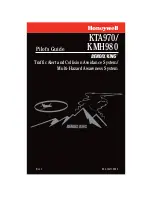
Audible rate-of-sink tone:
Falling is indicated by an audible signal which can be switched on when needed, and informs the pilot of changes
and of the rate of sink.
Thermals and down-draught fields can thus be recognized as soon as they start to happen:
- if the rate-of-sink increases, the pilot will hear a continuous tone which changes to a lower frequency as the
rate-of-sink increases.
- if the rate-of-sink decreases, the Primus indicates this with a HIGH-LOW double tone the high component of
which becomes shorter as the rate-of-sink decreases.
Once it reaches the zero level, the rate-of-sink signal is replaced by the rate-of-climb signal.
Rate-of-sink tone off-set:
The point at which the rate-of-sink tone switches over to the other kind of tone (from CONTINUOUS to HIGH-
LOW and back) is the rate-of-sink tone oft-set. This should correspond with the glider/kite/paragliders own
inherent rate-of-sink. Up draught fields can then be identified by the shortening HIGHLOW double tone, down-
draught fields by the CONTINUOUS rate-of-sink tone which changes its frequency.
The off-set point is set in the works at 1.2 m/s rate-of-sink.
Signal-free zone:
In order to prevent a confusing signal from being sent out when the rate-of-sink is fluctuating around the
glider/kite/paragliders inherent rate-of-sink, and to ensure that only significant changes set off an acoustic
warning, a signal-free zone is set up covering an equal range upwards and downwards.
The size of this zone is set in the works at ±50 cm/s, so that between 0.7 m/s and 1 7 m/s rate-of-sink the pilot
will not be irritated by audible warnings.
Rate-of-sink alarm:
This warning signal will give you greater safety in flight. If the rate-of-sink exceeds a certain pre-set figure the
alarm signal (loud pulsating tones) will be set off.
The threshold is set in the works at 5 m/s rate-of-sink.
Airspeed indicator:
The speed through the surrounding air is measured by a propeller-driven sensor which is connected to the Primus
by a cable. For high-precision readings, a sensor is used with a stabilizer from which a 2 metres long cable is
suspended.
Stop-watch:
The time reading is shown in minutes and seconds for the first hour, and hours and minutes thereafter.
It can be stopped for interim readings to be taken, and also re-set at 00:00.























